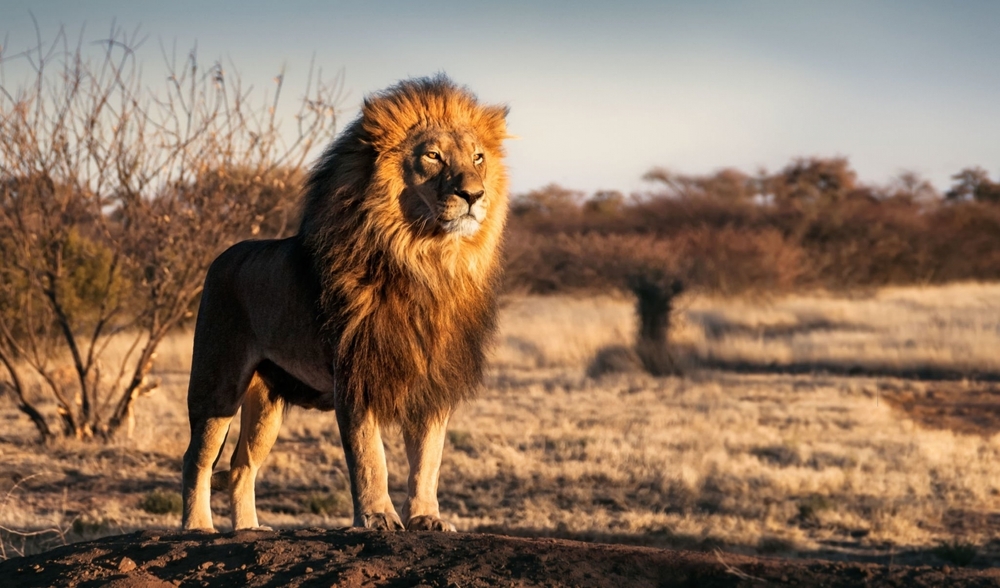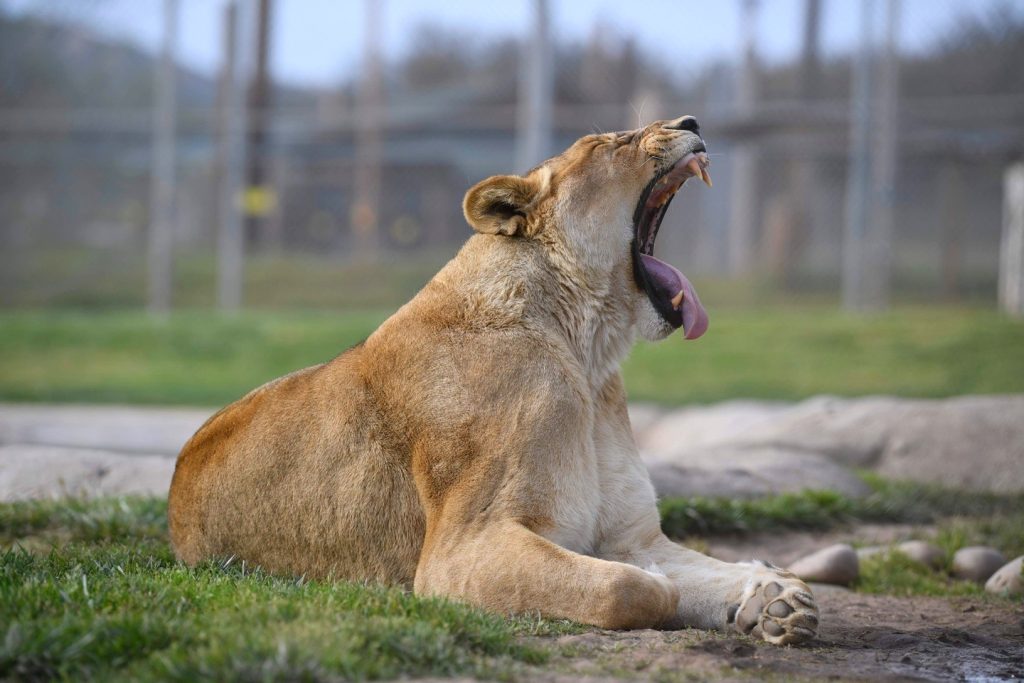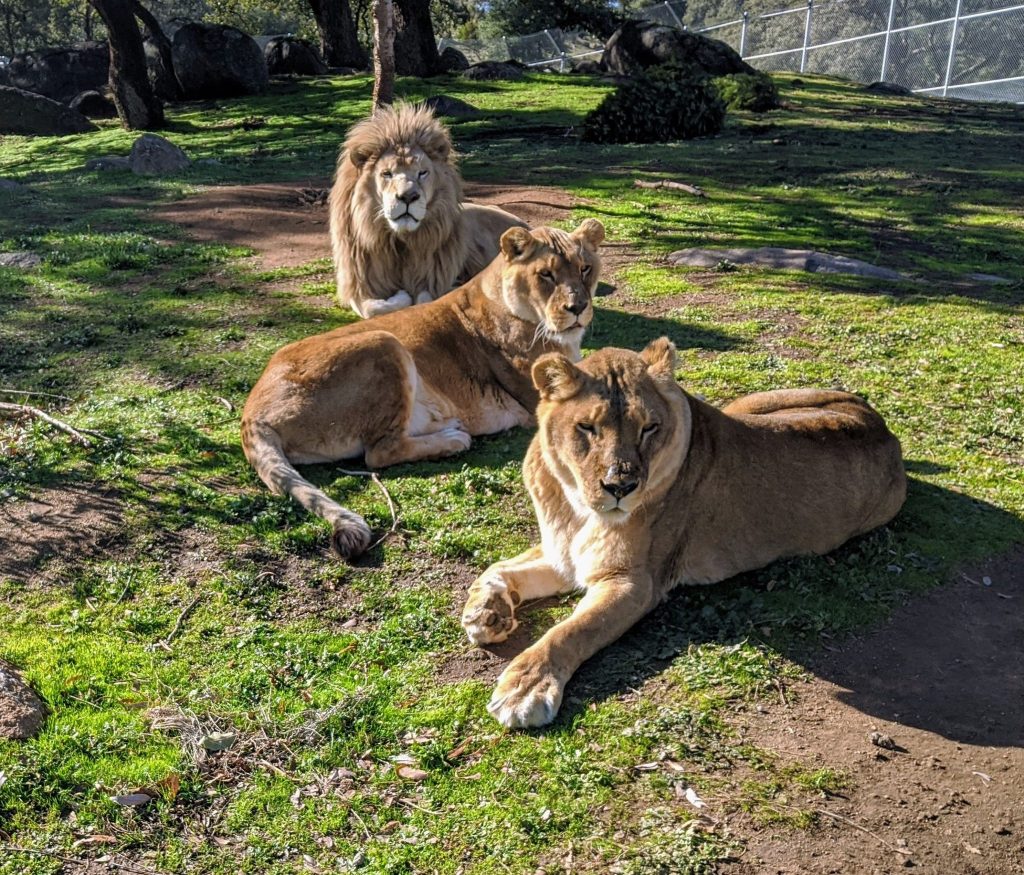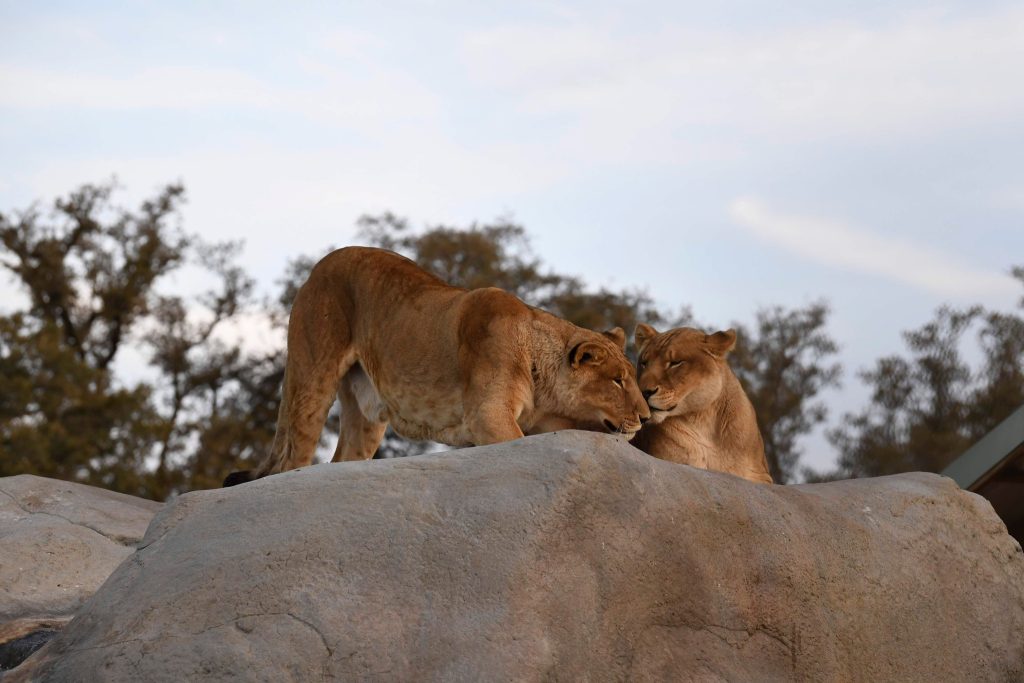

With its powerful roar and magnificent mane, the lion has excited the human mind for ages. Typically known as the king of the jungle, these apex predators play a significant role in balancing an ecosystem. Beyond the lion’s iconic image lies an interesting yet complex social animal with highly organized behavior. So, what’s special about lions, and how does their behavior impact their lifestyle?
Please keep reading to learn more about the lion’s social structure, diet, and challenges in the wild and how animal sanctuaries come in.
Lions live in prides, which are groups of about 15, mostly females. Group living is said to emanate from the fact that hunting is easy when done by a group. It makes hunting successful and minimizes injuries. It also ensures each lion receives a fair share of food.
In prides, lions often raise cubs, hunt prey, and protect the territory as a team. When living as a group, females participate more in cub rearing and hunting. A pride’s lionesses are typically related, consisting of daughters, mothers, sisters, and grandmothers.
Most females in a pride usually give birth almost at the same time. Lion cubs can nurse from their mother and other lionesses. Each pride typically has a maximum of two adult males.

Lions are vocal and communicate using a wide variety of sounds. A male lion’s majestic roar can transcend five miles (or eight kilometers) away. A roaring sequence starts with one or two softer moans and then several loud and intense roars that end in several grunting huffs. This roar serves different purposes, including territorial declaration, a warning to intruders, and attracting mates.
In addition to their iconic roar, other sounds that lions make can include deep growls, moans, chuffs, snarls, and purrs. A female lion’s roar is higher in pitch than a male’s.
Lions are carnivores, meaning they rely on meat for survival. Their wild diet comprises mostly large-sized and medium ungulates weighing between 100 and 1000 pounds (45 – 453 kilograms). The prey may vary depending on availability and geographical location, but zebras, buffalo, wildebeests, and other antelope species are the most common.
Lions are famed for scavenging; they often steal from other predators like leopards and hyenas. They employ this opportunistic behavior, especially when their usual prey species are out of reach. Large hyena groups can also snatch a lion’s catch. When there’s a shortage, lions have been seen to prey on smaller animals like reptiles and rodents.
Both male and female lions are usually polygamous and reproduce throughout the year. However, females are restricted to only two or one adult male within their pride. In the wild, lions breed once in two years, but in captivity, they can breed yearly.
Females have a mating window of three to four days, during which they can mate every 20 to 30 minutes with a male lion and have up to 50 copulations in 24 hours. The extended copulation stimulates a lioness into ovulation and lets one male secure paternity because other males are excluded. The gestation period is approximately 108 days, with a litter size between two and four cubs.

Typically, wild lions live in the savannas, grasslands, and open woodland of Sub-Saharan Africa. These areas have plenty of prey and favor the lion’s social behavior. However, lions can adapt to diverse conditions and thrive in other environments, such as dense forests and desert fringes, even though the populations in these habitats are usually more fragmented and smaller.
India’s Gir Forest National Park features a small population of Asiatic lions. This unique lion species is genetically and structurally distinct from its African counterparts. Its habitat is a combination of grasslands, dry deciduous forests, and scrublands. Conservation initiatives have helped stabilize this endangered population that once risked extinction due to habitat loss and hunting.
The African lion is listed on the IUCN Red List as endangered. Its population is in decline due to human-wildlife conflict, habitat loss, and illicit poaching. The illegal wildlife trade and trophy hunting also contribute to these threats.
Leading conservation organizations work hard to protect vulnerable lion populations via anti-poaching programs, habitat preservation, and community education initiatives.
Habitat loss is a major threat to lion populations today. Human activities encroach on lions’ habitats, leading to difficulties for these animals. Clearing of grasslands, forests, and other natural surroundings for livestock and crop farming converts wild lands into farming fields.
Urbanization is another factor destroying natural habitats for these majestic animals. As towns and cities grow, they extend to nearby wilderness zones to set up buildings, roads, and other utilities. These activities fragment the landscape, hindering lions from finding suitable territories for survival.
In addition to habitat loss, the illegal wildlife trade poses a severe threat to lion populations. Poaching for their bones, skin, and other body parts, driven by the demand for traditional medicine and exotic pets, significantly reduces their numbers. This illicit trade not only endangers lions but also disrupts the delicate balance of the ecosystems they inhabit. Combating this illegal activity is crucial to ensure the survival and well-being of these magnificent animals.

Accredited Wildlife sanctuaries like Lions Tigers & Bears play a significant role in rescuing, conserving and rehabilitating injured, abused, and neglected lions.
The sanctuary’s veterinary teams provide quality medical care for the rescued lions’ malnutrition, injuries, mental conditions, and illnesses.
The sanctuary’s enclosures are designed to resemble the natural habitats that lions are used to. Lions can roam freely in a spacious natural environment with oak trees, meadows, and hills. The environment fosters natural behavior while relieving stress.
In an accredited wildlife sanctuary and rescue facility, such as Lions Tigers & Bears, the lions’ diet is carefully planned to match their natural feeding behavior as closely as possible. For example, Louie, the white lion, enjoys racks of ribs, and Jillian and Suri love to feed on beef.
Our accredited wildlife sanctuary educates the public about the need for rescue and conservation, and the plight of wild animals. Through educational programs and guided tours, the sanctuary aims to inspire the public to embrace conservation efforts and implement sustainable practices that preserve natural habitats for lions.
Lions Tigers & Bears True Exotic Animal Sanctuary collaborates with the public to provide a safe and caring environment for lions and other rescued animals. Donate to this noble cause and help ensure that a rescued lion, tiger, or bear continues to enjoy a safe, healthy, and caring environment.

Ph: 619.659.8078
Fx: 619.659.8841
[email protected]
24402 Martin Way, Alpine, CA 91901